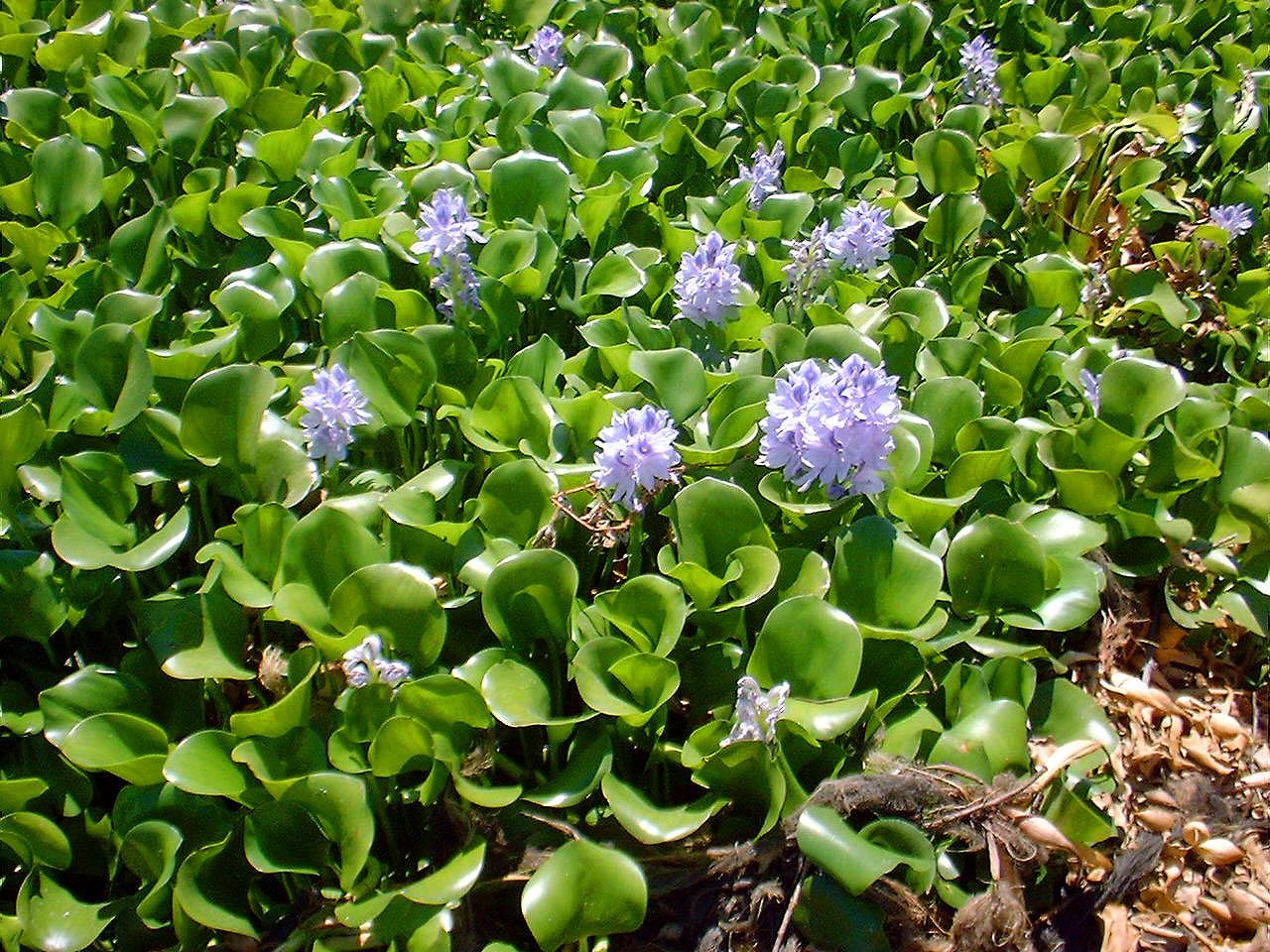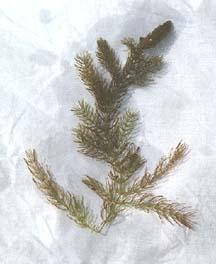
Hydrilla |
Of the 10 Most Unwanted aquatic plants, Hydrilla is
numbers 1-5. This prolific, rapidly-growing submerged plant thrives in almost dry water to 20 feet
deep. Leaves are small (.5 to .75�), triangular-pointed with serrated edges.
They occur in whorls of 4 to 8 leaves along the stem and one or more protruding bumps along the
middle rib on the underside. They are usually green but may appear bleached to yellow or brown.
Stems are heavily branched near the surface and grow horizontally, forming dense mats of vegetation
which displace native species, restrict flow, and impair small boat navigation and other
recreational uses. Small tubers are present at the plant's rooted base. In my opinion, hydrilla, in
epic proportions, is best managed by a combination of triploid grass carp and
chemical treatment. Don't be nice to this weed...it will grow into a monster.
When we began a consultation on a 100-acre lake seven years ago, hydrilla was covering about 5 acres. Within 1.5 years, a sonar treatment was made. At the two year mark, we introduced grass carp. By the time we were seeing control, 30 acres of the lake was covered. The lesson here is if you want to use grass carp on hydrilla, don't delay. The longer you wait, the more carp it takes. |
 Filamentous Algae |
Filamentous algae are single algae cells that form long visible chains, threads, or filaments. These filaments intertwine forming a mat that resembles green wet wool. This weed starts growing along the bottom in shallow water or attached to structures such as rocks or other aquatic plants. Often it floats to the surface forming large mats commonly referred to as "pond scum." Grass carp consume filamentous algae but it is not a preferred food item. They may eat this one if nothing else is available. The algae can be raked or seined from the pond as a bicep-building exercise. |

Water Hyacinth |
Water Hyacinth usually floats free in large masses but may be rooted in the mud. The plants range from a few inches to as much as 3' in height. They have slender rootstocks with rosettes of leaves and dark, fibrous, branching roots dangling beneath the plant. Flowers may be blue, violet, or white and are quite showy. Water hyacinths have become a serious economic pest in Florida. Many dollars are spent annually to control this attractive but devastating weed. Grass carp turn up their noses at this one, so revert to chemical treatment. http://plants.ifas.ufl.edu/hyacin2.html has more. |

Spikerush |
Spikerushes are commonly called "spikerush," "slender spikerush," or "hairgrass" with a largely submersed growth form. Spikerush will grow as emergent, submersed or in surfaced floating mats. Unsightly floating mats often develop when the loosely rooted plants dislodge from the bottom. Although there are several species, the submersed form generally has long narrow leaves, or staulks, that make the term "hairgrass" descriptive. Both the seed and vegetative reproduction make this weed difficult to control with herbicides and/or water level fluctuation. Although grass carp control hair grass effectively, precise rates are difficult to determine. |

Coontail |
Coontail is a submersed common and troublesome native species growing around the shoreline. While this plant is not as aggressive as hydrilla; I have seen it grow to the surface in depths up to 10'. It will often grow in dense mats to the surface in 6-7' of water; however, it will grow in deeper water but usually doesn't grow to the surface and remains as a bottom plant. It has a rudimentary root system (a "hold-fast" rather than a typical strong root) and, therefore, is easily dislodged by wakes, current, wind, etc. and can cause problems with clogging barriers and boat motors. At a distance, coontail looks similar to hydrilla when it surfaces. As with most weeds, it can be controlled with herbicide and/or grass carp. It is further down the grass carp food chain than hydrilla. |